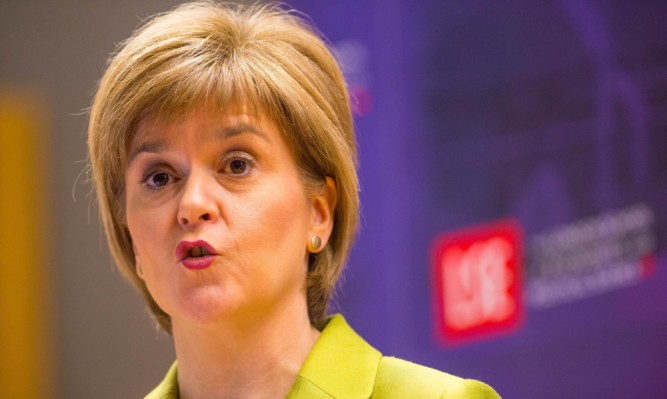Labour should relish the chance to “lock the Tories out of government” through a deal with the SNP in the event of a hung parliament, Scotland’s First Minister Nicola Sturgeon has said.
The SNP leader said there were “many things to commend” some kind of tie-up if – as predicted by current opinion polls – her party makes sweeping gains at Labour’s expense north of the border at the general election on May 7.
Ed Miliband has today ruled out a coalition with the nationalists, saying there would be “no SNP ministers” in any government he leads.
But Ms Sturgeon said it would be incomprehensible if he was not prepared to make a deal if he failed to secure an overall Commons majority.
“I can’t see for the life of me why Labour wouldn’t want to contemplate the possibility of working with the SNP to keep the Tories out of office,” she said at a lecture to the London School of Economics.
“As long as there are more SNP and Labour MPs than there are Tory MPs, we can lock the Tories out of government, there is no question about that.
“So I won’t rule out those other working relationships. In fact, I think they may have many things to commend them.”
Mr Miliband ruling out a formal coalition – where the SNP takes ministerial posts – is misleading, she suggested, as that had always only been a slim possibility.
She said in answer to questions after the speech: “But working with Labour, in a looser arrangement, I certainly wouldn’t rule out because I want to see SNP MPs being in the House of Commons arguing for and pushing for progressive change.”
She ruled out any pre-election talks over the detailed terms of any deal.
“What happens after the election will be dictated first and foremost by how people vote in the election and all of us have got to be mindful of not taking people for granted,” she said.
In the speech, Ms Sturgeon suggested a minority UK government propped up by the SNP could lead to more considered and consensual policies for the whole of the UK – through enforced discussion and by forcing reform of “arcane” Westminster procedures.
The process of forming a Budget “allows virtually no time for proper deliberation or consultation”, she complained, suggesting a Holyrood-style system would help prevent chancellors producing political “rabbits out of a hat” before elections.
“There are some advantages to minority government. When we were in a minority, we could only win votes by winning arguments. Sometimes we had to compromise. That process can – and often did – lead to better budgets.
“At different times we won support from Labour on increasing apprenticeships; from the Greens on a home insulation scheme; from the Conservatives on regenerating town centres; and from the Liberal Democrats on college bursaries.
“It involved a process of building consensus across a whole parliament – not just forcing decisions through using the party whip.
“And the point is this: the Scottish system lends itself to that, because there is time for negotiation to take place and Parliament can see and scrutinise the compromises which are made between the draft Budget and the Budget Bill.
“Doing anything similar at Westminster would require substantial changes to how budgets are put together – most importantly, perhaps, it would require a different, far more consensual approach.
“I think that would be very beneficial and, who knows, it could be one of the benefits of a period of minority government following the general election.”
